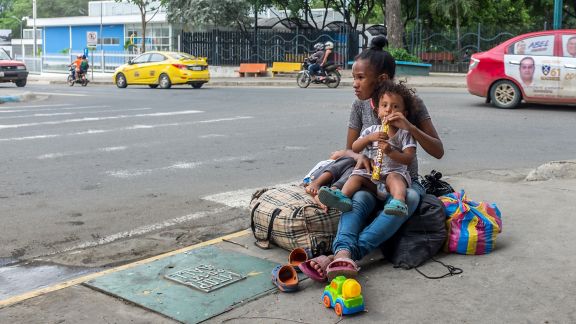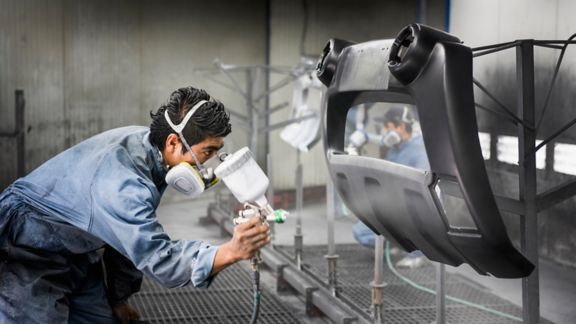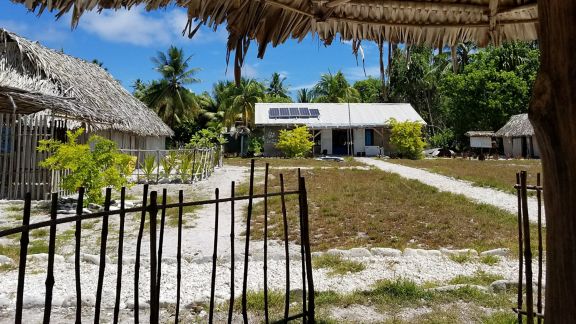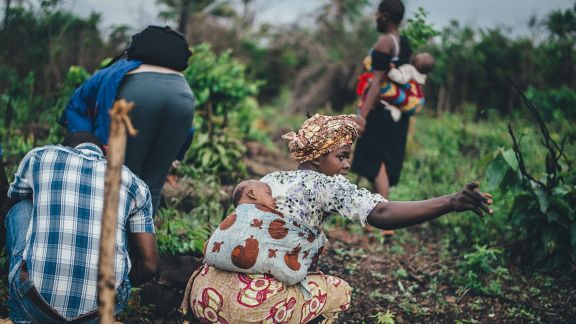Including Men in Women’s Economic Empowerment Activities Can Reduce Sexual Violence
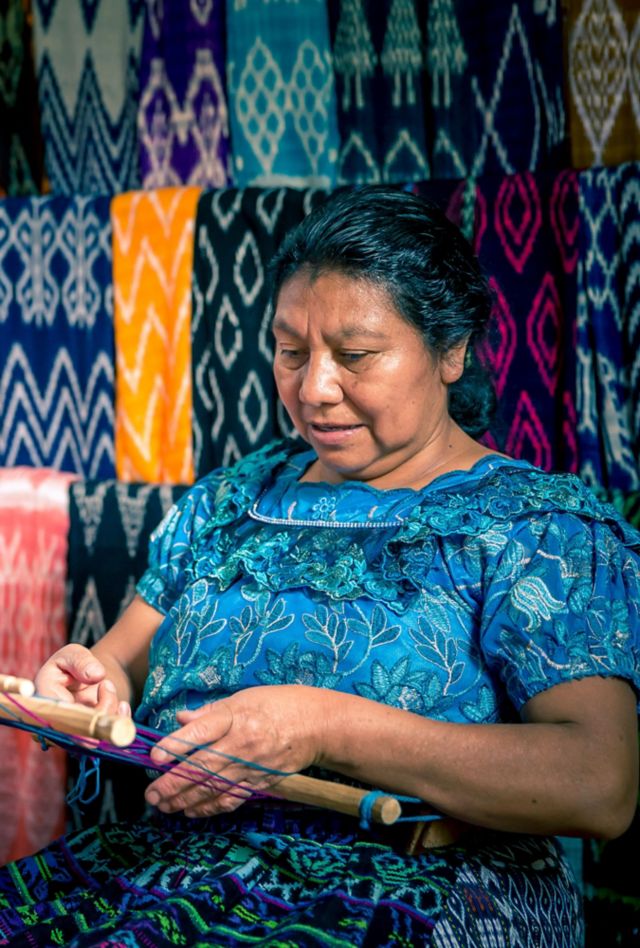
This article is from our NORC Now newsletter. Subscribe today.
March 2024
Globally, far fewer women than men work outside the home. According to the United Nation’s labor agency, slightly over half of all women work outside the home versus 80 percent of men. Women’s Economic Empowerment (WEE) activities seek to increase the number of women in the workforce and build their self-sufficiency.
The U.S. Agency for International Development (USAID) supports a cluster of WEE activities that educates female participants about sexual violence (SV) while providing them with workforce skills. The cluster is part of USAID’s Gender Equality and Women’s Empowerment Hub’s (USAID/GenDev) sexual violence portfolio.
In 2022, USAID/GenDev tasked NORC with conducting a broad performance evaluation of this cluster and three other anti-SV activity clusters. Our top finding across the board was that programs that included men saw increased participation by women. Therefore, programs should consider being gender inclusive.
“Household power dynamics in the many developing countries we studied are such that many men still have a say in whether women in their household can work outside of it,” said Ridhi Sahai, a research scientist in NORC’s International Programs department. “By inviting men to participate in WEE programming and training alongside their mothers, wives, or daughters, programmers can reach more female participants while also changing men’s mindsets about gender equality, sexual violence, and more.”
NORC examined the following five activities in the WEE cluster to see if they were based on context-specific and international evidence, were achieving targeted sexual violence results, and were sustainable:
- A Micro-Journey to Self-Reliance (Benin)
- Enabling Environment for Economic Empowerment for Women (Burundi)
- Global Labor Program (Lesotho)
- Engendering Industries (Nigeria)
- WEE in Mesoamerica (Guatemala)
Our approach included a review of 119 program documents, 11 focus groups that included program participants, three surveys completed by 351 respondents, one field observation, and 38 interviews of staff from USAID/GenDev, implementing teams, and local partners.
“Our interviews revealed successes, areas for improvement, and some surprises. In one case, we learned that some men were resistant to anti-GBV work because they feared that it demonized them,” said Katrina Kamara, a senior research associate in NORC’s International Programs department. “Breaking through such misconceptions is another reason to include men in the mix in a safe, feasible, and useful way.”
We also discovered that program participants appreciated the focus on women’s economic empowerment and self-sufficiency, that there was active and joint engagement by local grassroots groups and people in power, and that activities were well-monitored and used appropriate measures to generate data for decision-making.
That said, some approaches were weaker than others. In some cases, programmers did not conduct a needs assessment or consult international evidence before designing the activity. We recommend mandating a needs assessment that consults relevant stakeholders, especially sexual violence survivors, as the first step in activity design. We also suggest helping programs collect and consider evidence relevant to achieving their goals.
“In terms of sustainability, we found that a lack of long-term funding and support made it difficult, if not impossible, to sustain the activities once the program ended. We highly recommend that, from day one, programs look for ways to create pathways to or structures for future funding,” said Ridhi Sahai.
Lastly, we suggest paying sexual violence survivors and local community stakeholders fairly for their time and effort, especially if they are asked to help design and implement the activity. Donors should provide technical and financial support for this and seek regular feedback from participants.
USAID/GenDev will use our WEE evaluation, three additional cluster reports, and an overarching review of the entire sexual violence prevention portfolio to help guide future sexual violence oriented work.
More from This Series
This article is from our flagship newsletter, NORC Now. NORC Now keeps you informed of the full breadth of NORC’s work, the questions we help our clients answer, and the issues we help them address.




